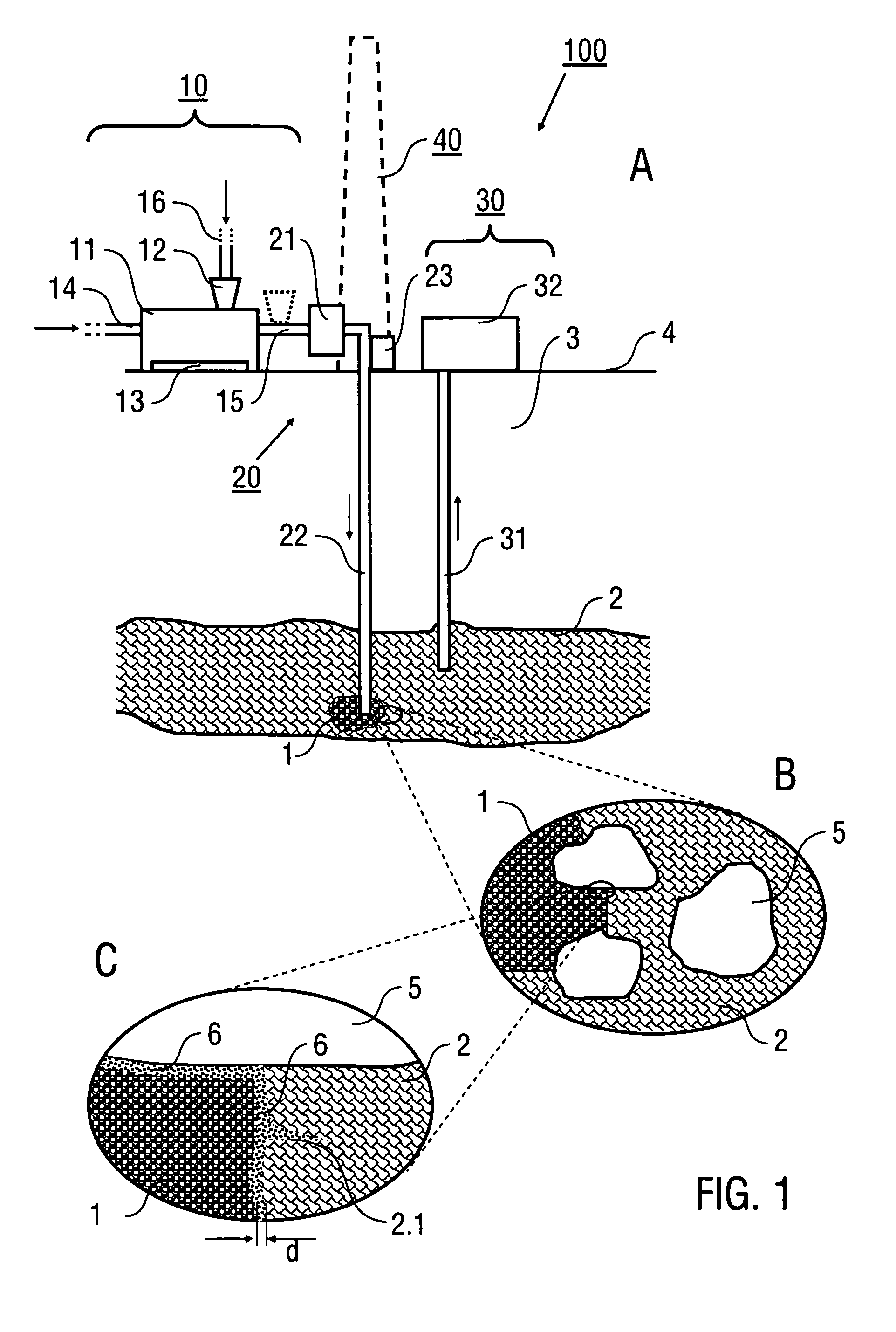Method of creating a carbon dioxide hydrate
a carbon dioxide and hydrate technology, applied in the field of carbon dioxide hydrate creation, can solve the problems of inability to realize geological formation stability, hydrocarbon still includes large amounts of carbon dioxide, and the practical implementation of processing geological hydrocarbon hydrates has not been investigated. achieve the effect of improving conversion efficiency and increasing conversion ra
- Summary
- Abstract
- Description
- Claims
- Application Information
AI Technical Summary
Benefits of technology
Problems solved by technology
Method used
Image
Examples
Embodiment Construction
[0023]A preferred embodiment of the invention is described herein with reference to creating a carbon dioxide hydrate by decomposing a methane hydrate. It is emphasized that the implementation of the invention is not restricted to this application, but rather is possible with other hydrocarbon hydrates (natural gas hydrates), e.g., ethane or ethylene hydrates, or the like. Pressure and temperature conditions for the formation of carbon dioxide hydrate correspond sufficiently to those of stability regions of natural gas hydrates for practicing the present invention. The stability regions can be determined from measured values of natural gas hydrates deposits and from experimental data described in published literature.
[0024]FIG. 1 schematically illustrates basic features of one embodiment of an inventive deposition device 100 and details of the inventive methods of creating a carbon dioxide hydrate and releasing hydrocarbon gas from a gas hydrate. FIG. 1A illustrates the deposition d...
PUM
| Property | Measurement | Unit |
|---|---|---|
| thickness | aaaaa | aaaaa |
| thickness | aaaaa | aaaaa |
| thickness | aaaaa | aaaaa |
Abstract
Description
Claims
Application Information
 Login to View More
Login to View More - R&D
- Intellectual Property
- Life Sciences
- Materials
- Tech Scout
- Unparalleled Data Quality
- Higher Quality Content
- 60% Fewer Hallucinations
Browse by: Latest US Patents, China's latest patents, Technical Efficacy Thesaurus, Application Domain, Technology Topic, Popular Technical Reports.
© 2025 PatSnap. All rights reserved.Legal|Privacy policy|Modern Slavery Act Transparency Statement|Sitemap|About US| Contact US: help@patsnap.com


